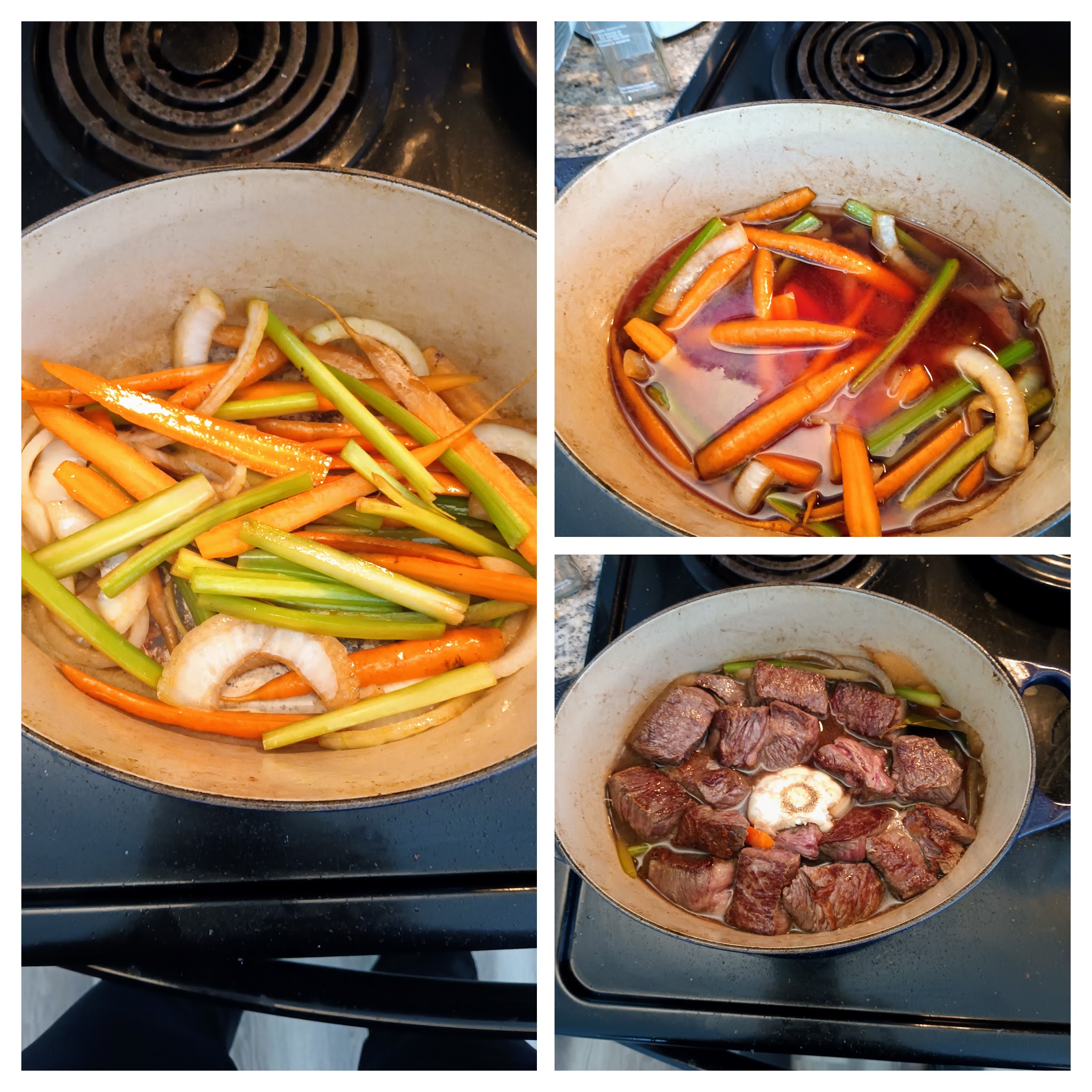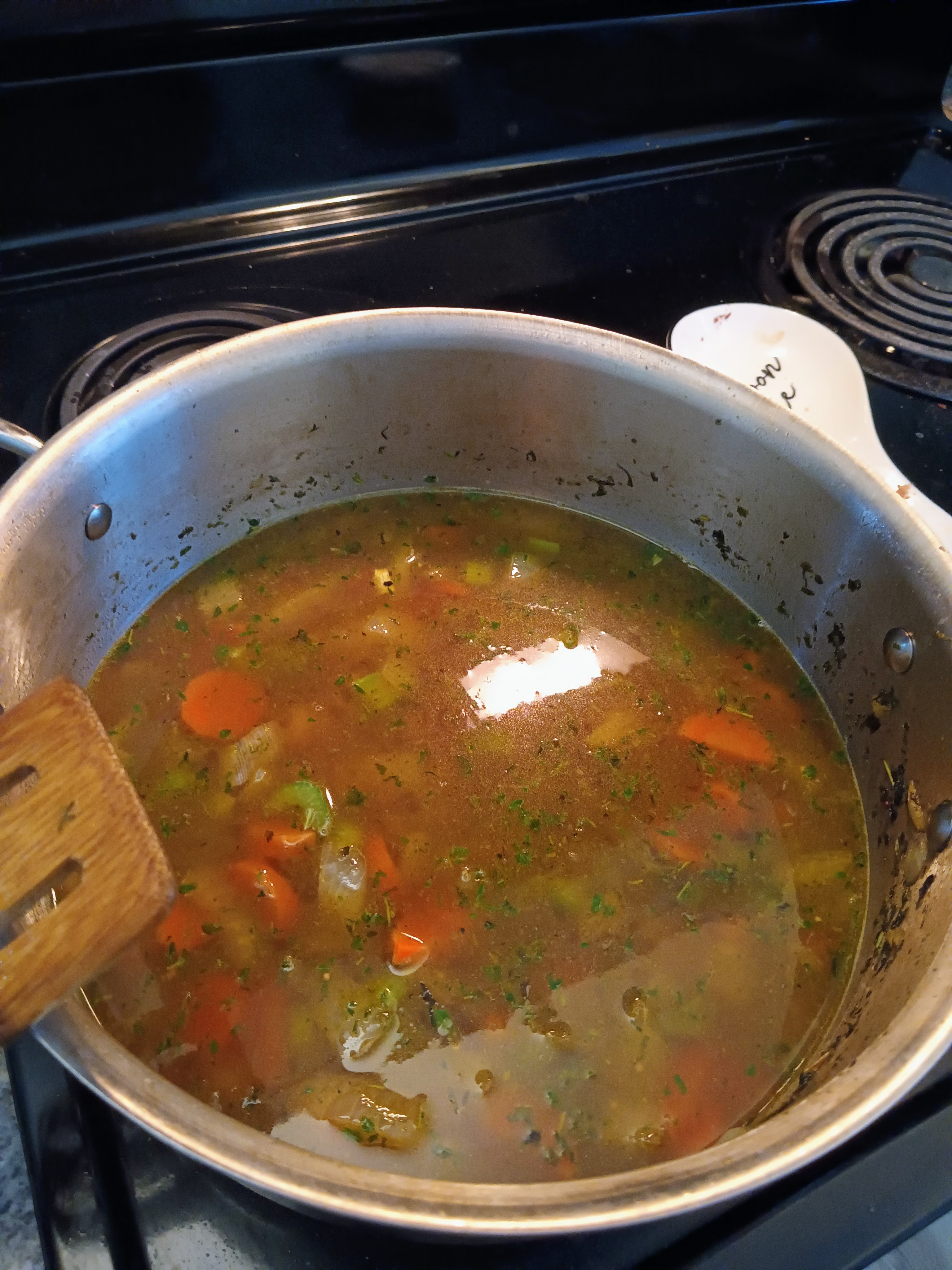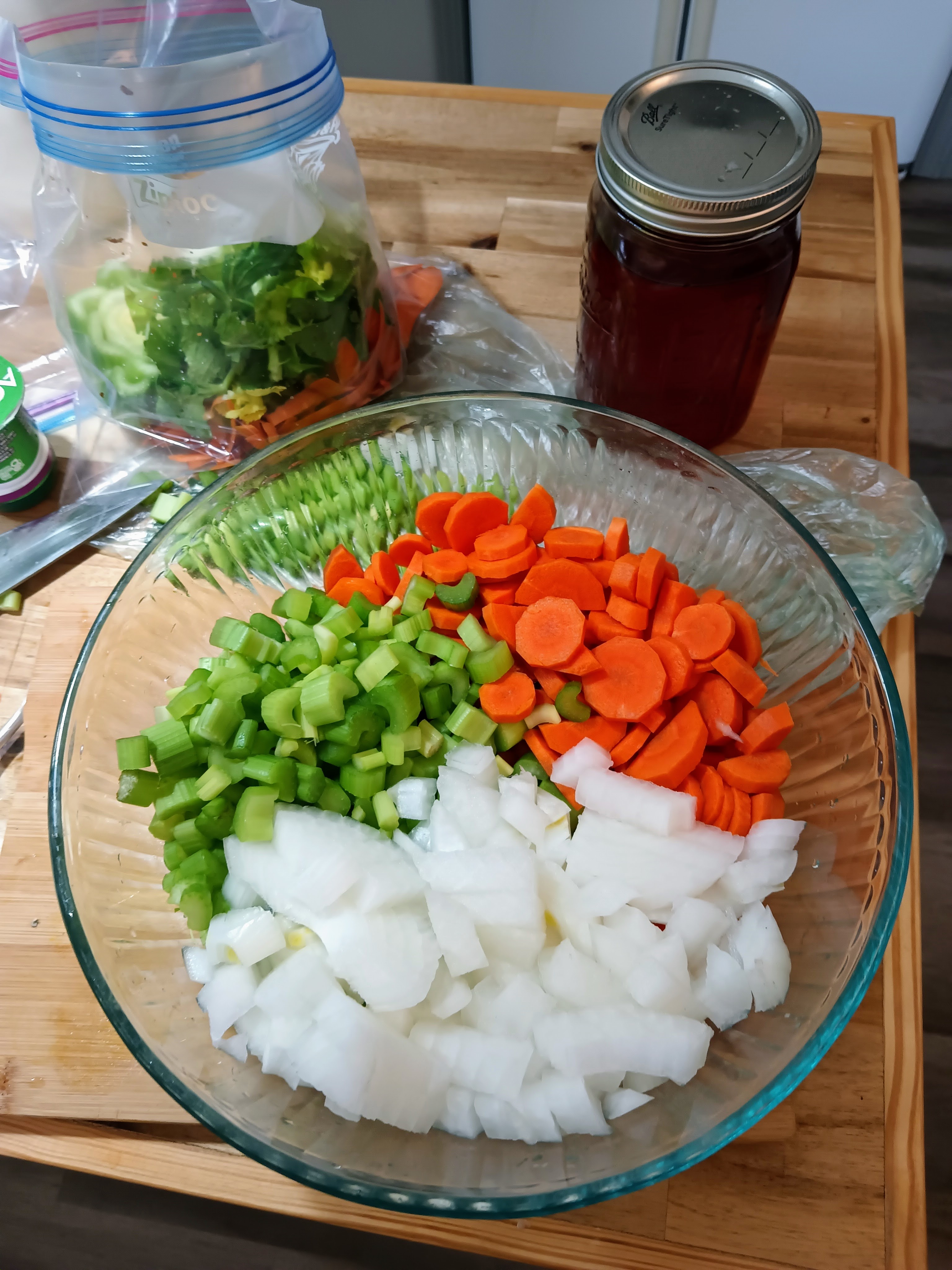Flavor Foundations: Mirepoix and Other Aromatic Bases (with Recipes for Each)
When I was a fledgling lad just beginning my culinary journey, the word mirepoix (pronounced mere-PWAH) intimidated me. All I knew about it was that a lot of recipes requested it, and since it was a French term, it was either way too difficult to figure out, or just a snooty, pointless addition to food.
I know, I had an attitude problem. And to be honest, my attitude got worse when I found out mirepoix is just a mix of chopped vegetables. That’s what all the hubbub was about?

I eventually understood that mirepoix isn’t just a random mix of vegetables. The ingredients in mirepoix (namely onion, carrot and celery) are highly aromatic. Or in other words, saute some mirepoix and braise it in red wine along with some beef that you salted a day or two before, and you just made the best Dutch oven full of braised beef you’ve ever had.
Maybe in a future article I’ll have to write about how to make beef so soft you can cut it with a spoon and it’ll practically melt in your mouth. But for now we’ll stick with mirepoix.
What the Heck is Mirepoix?
The Science: The ingredients in mirepoix contain volatile compounds that are released through heat and fat, and these compounds contribute to the overall sensory experience of a dish. Cooked mirepoix tastes incredible and has a variety of engaging textures: onions grow sweet and soft, carrots bring a surprising earthiness and are super pleasant when al dente, and celery grows herbaceous and just slightly bitter. These complementary aromas and textures round each other out and form an incredibly aromatic base for the rest of the dish.
The Art: Imagine you’re building a house. Mirepoix becomes the foundation on which you build your masterpiece. It is the foundation for building flavor in a wide range of dishes. It is a fragrant starting point for soups, stews, sauces, and other dishes. In the picture above, I rough chopped mirepoix and sweat it in butter before adding homemade vegetable stock. Frankly, I could have just eaten it like this for a healthy soup, but I later added cream, cheese, herbs, and chicken for a savory and aromatic chicken chowder.
Mirepoix is not exclusive to French cooking. The reason we use the French term is because French cuisine is the backbone to culinary technique in most of the Western world, so we tend to borrow a lot of their vocabulary. However, the Spanish have sofrito, India has tadka, the U.S. has the Cajun Trinity, and the list goes on. Each of these fancy words are just terms for the same thing: a mix of super aromatic vegetables, herbs and spices that form the base of cultural dishes around the world.
Aromatic bases vary from cuisine to cuisine, reflecting regional preferences and ingredient availability. These bases are crucial in culinary traditions and are an integral part of creating depth and complexity in dishes. They are not only about adding aroma but also about providing a harmonious flavor profile that enhances the overall culinary experience.
So Why Does This Matter?

There’s a reason that mirepoix has appeared in some form or another in every culinary tradition in the world. And this matters in your personal kitchen for several reasons:
- Culinary Versatility: Understanding different mirepoix variations allows you to adapt to various cuisines and dishes, expanding your culinary repertoire.
- Flavor Enhancement: Mirepoix varieties can significantly enhance the flavor and aroma of your dishes, making them more aromatic and delicious.
- Regional Exploration: Learning about different mirepoix types is a culinary journey that helps you explore the flavors of diverse global cuisines.
- Authenticity: When preparing traditional dishes, using the correct mirepoix variation ensures an authentic and true-to-recipe result.
- Balanced Nutrition: Different mirepoix components bring a variety of nutrients and vitamins to your dishes, contributing to a balanced and nutritious diet.
- Textural Variety: Mirepoix elements provide various textures, from the softness of onions to the crunch of celery, adding variety to your dishes.
- Creative Cooking: Experimenting with different mirepoix variations can spark creativity in the kitchen and inspire new and unique flavor combinations.
- Impressing Guests: Incorporating international mirepoix variations into your cooking can impress and delight your family and guests with diverse and exciting flavors.
- Cooking Confidence: Expanding your culinary knowledge by mastering different mirepoix types can boost your confidence in the kitchen.
- Food Exploration: It encourages you to explore and experiment with ingredients you might not have used otherwise, broadening your culinary horizons.
- Well-Rounded Skills: Understanding various mirepoix types is an essential skill for aspiring chefs and home cooks looking to refine their culinary abilities.
- Family Traditions: Learning about mirepoix variations can help you preserve and pass down family or cultural cooking traditions.
Simply put, mirepoix and all its sister aromatic bases are part of Cooking 101. As my children grow up and start helping in the kitchen, they’ll begin by preparing the mirepoix.
Boring Article; Just Give Me a Recipe!
If you’ve never played around with mirepoix before, I hope I’ve convinced you now. To help you on your journey, this article’s recipe is a collection of different aromatic bases to try at home. They’re all super cheap, super versatile, and will make your food super authentic and delicious.Matthew's Aromatic Bases

This isn't a "recipe" as much as it's a collection of basic kitchen staples. This is meant to encourage you to experiment with well-established flavor profiles, have fun in your kitchen, and develop your own recipes. This is also a great introduction to classical cooking techniques and cultural cuisine. These aromatic bases are a collection of "flavor foundations" used in the first step of traditional recipes. This is how you start with a strong flavor base that leads to an incredible meal. Depending on the cultural heritage and specific dish, ingredients may call for dicing or mincing, and may call for butter, olive oil, or any other type of cooking fat. However, the beauty of aromatic bases is it's easy to use as a starting point to improvise in the kitchen. So feel free to mix chopping and cooking techniques to suit your taste and experiment with flavors.
Ingredients:Mirepoix
This is the classical French aromatic base that forms the backbone of classical dishes and sauces, like coq au vin, boeuf bourguignon, ratatouille and French onion soup, as well as espagnole sauce (one of the classical "Mother Sauces") and many other sauces. This is often achieved by blending the mirepoix at some point in the cooking process, but recipes often involve simply sauteeing a good mirepoix, then layering new ingredients on top.
3 carrots
2 celery stalks
1 large white onion
butter or olive oil
note: French mirepoix is usually diced / chopped and cooked in butter. However, if you mince the ingredients, add garlic, and saute them in olive oil, you will instead get Italian soffritto.
White Mirepoix (Mirepoix Blanc)
2 celery stalks
1 white onion
butter or olive oil
note: Mirepoix blanc is the go-to aromatic in recipes when you don't want the color and sweetness of carrots. This is often the case in creamy soups or in seafood dishes where you don't want to overpower the delicate flavors.
Cajun Mirepoix (aka The Holy Trinity or Cajun Trinity)
Contrary to popular belief, cajun food is not a synonym for "ridiculously spicy and probably burned." Rather this is the big daddy to most of the cajun food we love, including gumbo, jambalaya, and dirty rice. It is also used as the foundation for sauces like sauce piquante, cajun remoulade, and cajun gravy.
1 yellow onion
1 large green bell pepper (I often replace these with red bell peppers)
2 celery stalks
1-2 cloves garlic, minced
lard, bacon fat, or butter
note: The main idea of the Cajun Trinity is to add your three primary aromatics (onion, bell pepper, and celery) in a 2-1-1 ratio, so two parts onion for each one part bell pepper and celery.
Sofrito
If your Spanish rice has never turned out quite right, then look again at your flavor foundation. This aromatic base is used in sofrito rice, paella, and arroz con pollo. It will happily turn a couple cups of rice into an entire meal.
4 tablespoons olive oil
1 yellow onion
3 cloves garlic, minced
1 green bell pepper
5-6 Italian plum tomatoes 14-ounce can San Marzano tomatoes)
1/2 teaspoon paprika
1/2 teaspoon oregano
1/2 teaspoon cumin
Directions:
If you are merely experimenting, try combining your aromatic base with rice for a delicious rice dinner, stock (aka broth) for a flavorful soup, or noodles for an incredible pasta.
Otherwise, consider looking up one of the many dishes I mentioned throughout the ingredient list and see all the ways these aromatic bases can make an incredible home kitchen.
Recipe formatted with the Cook'n Recipe Software from DVO Enterprises.
Drop a comment and let me know which of these you’re most excited to try, or feel free to request mirepoix mixes from even more regions of the world!
 Matthew Christensen
Matthew Christensen
Weekly Newsletter Contributor since 2023
Email the author! matthew@dvo.com
